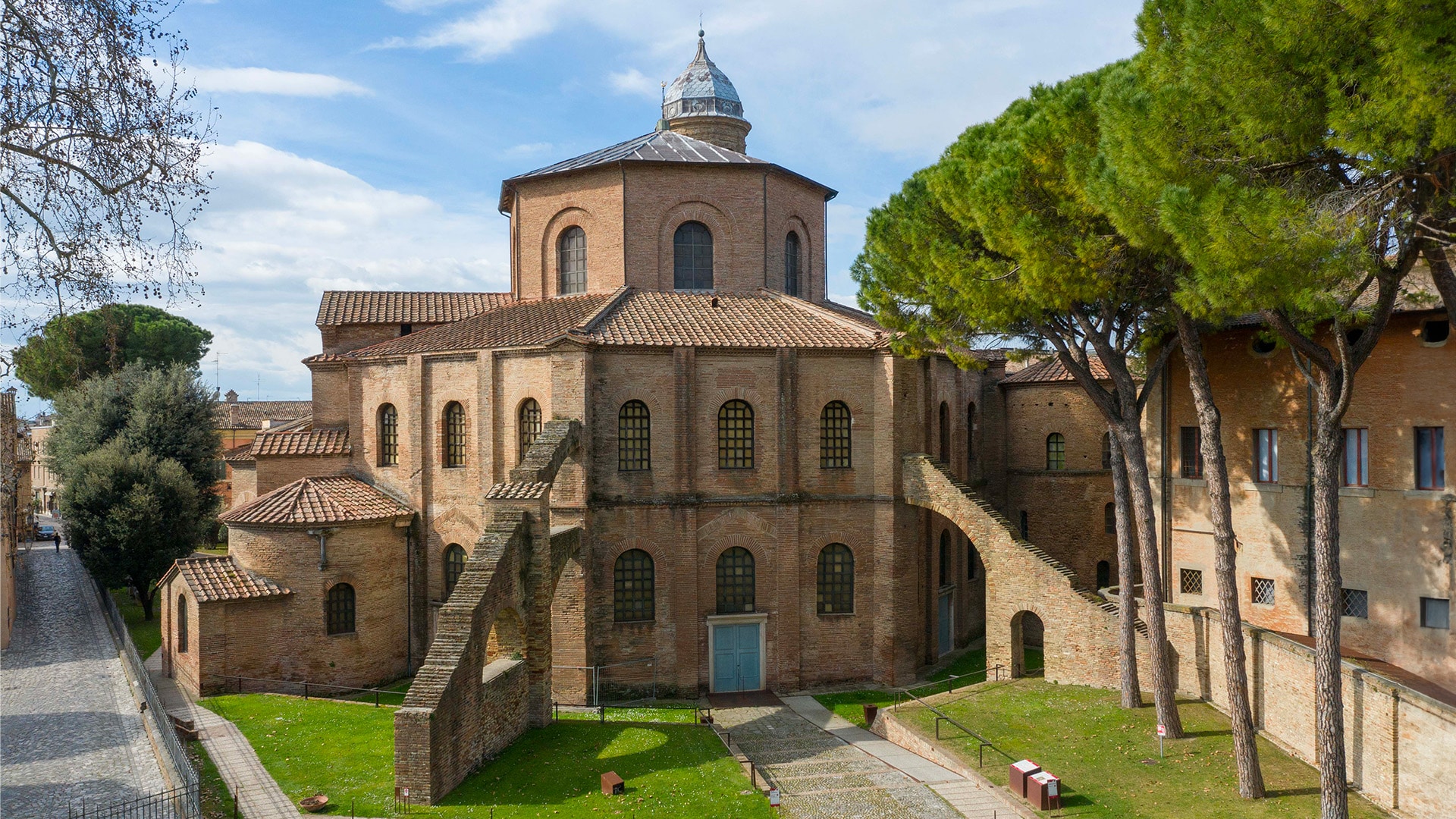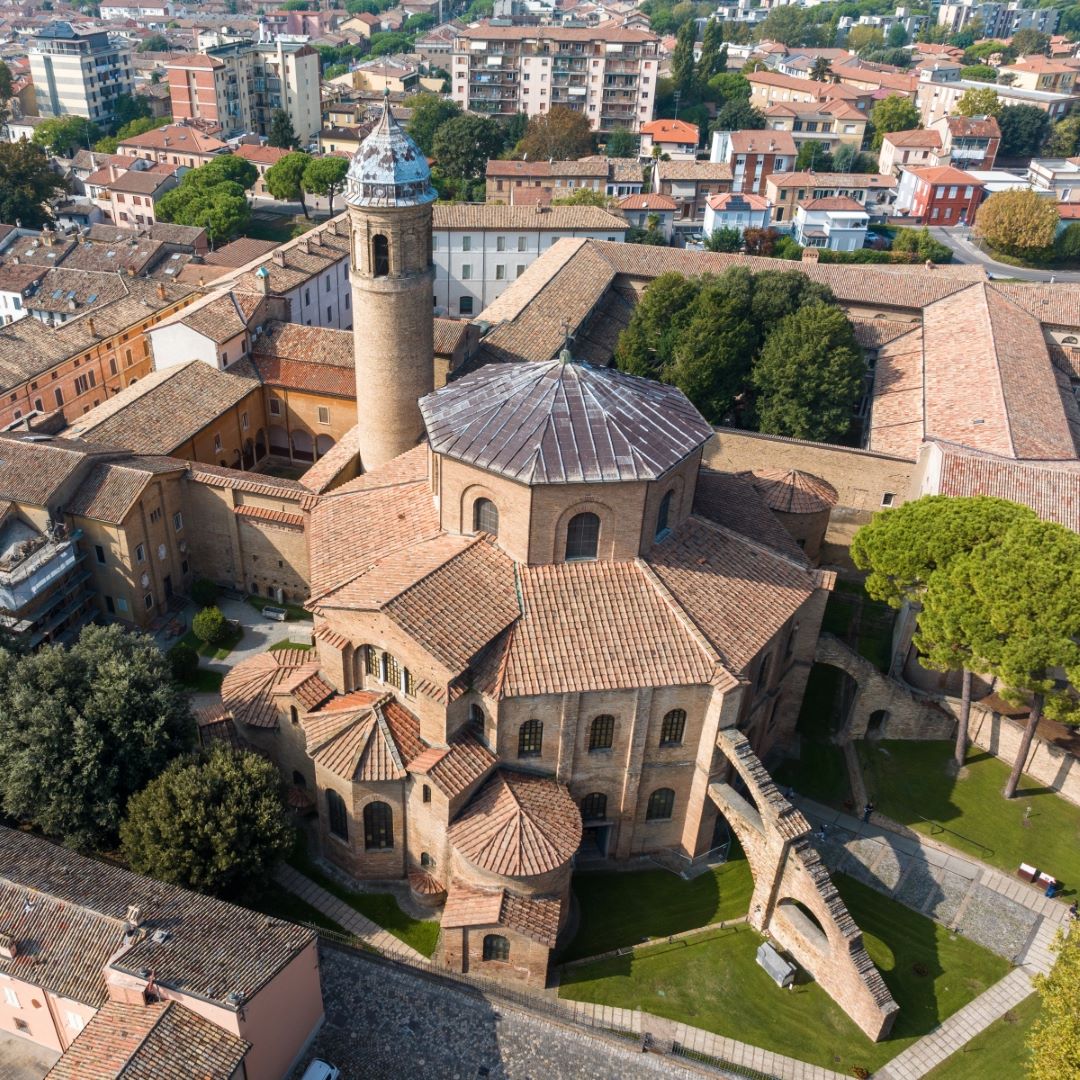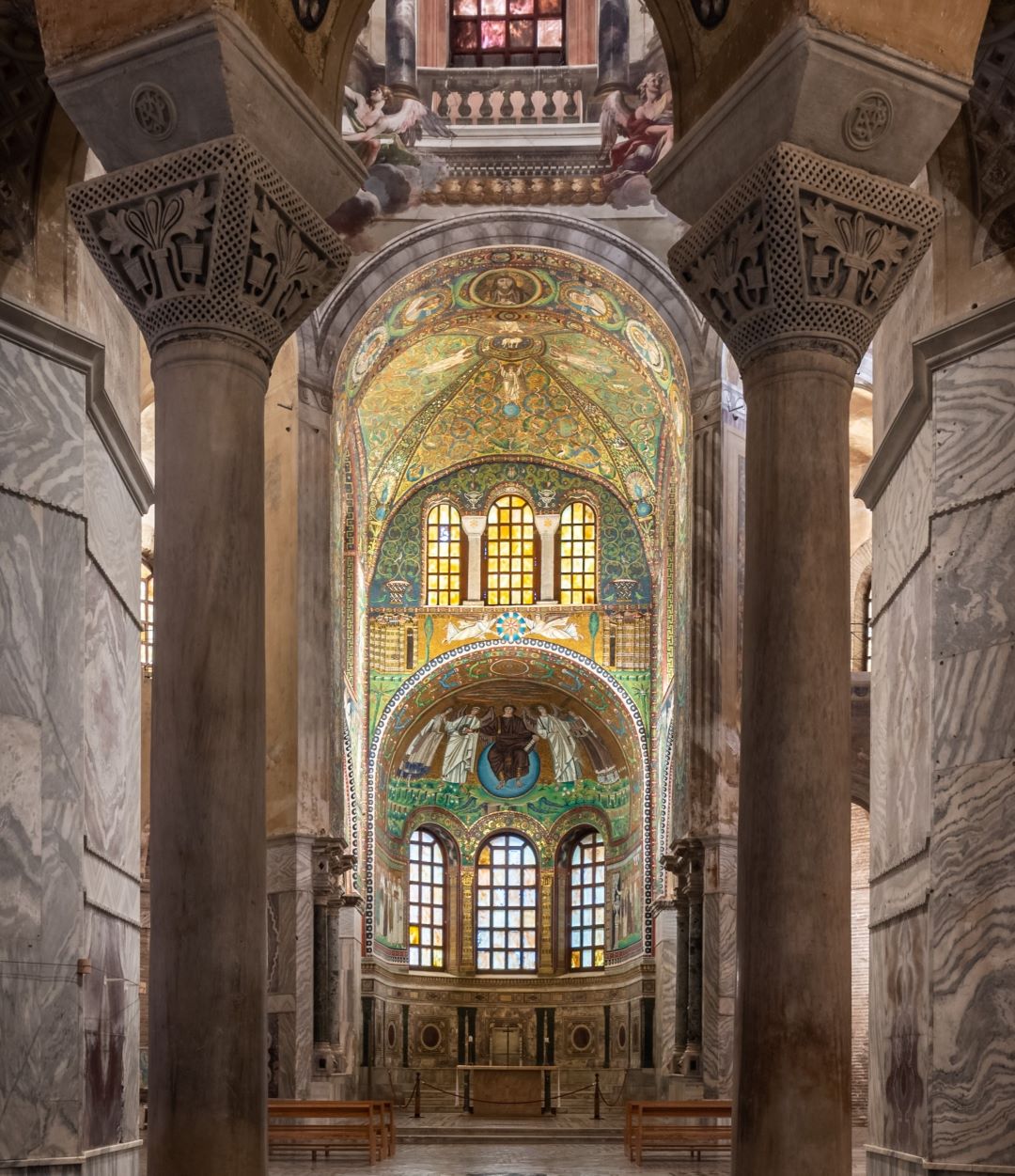
Mausloeum of Galla Placidia
The Mausoleum of Galla Placidia, built in 425 A.D., with its unique early Christian mosaics, is one of the eight amazing UNESCO World Heritage sites in the city of Ravenna.






WHY IT IS A UNESCO HERITAGE SITE
It is unique for its architecture, where elements of Western and Eastern traditions coexist, and for its mosaics, which have remained intact in their original form and bear witness to specific religious and historical-political concepts.
The façade is made of simple red bricks, and the octagonal, double-walled design features an interior corridor that encircles the central structure. This shape is directly inspired by Constantinople and resembles the churches of Saints Sergius and Bacchus and Hagia Sophia. According to legend, it was built on the ancient site of Saint Vitalis’ martyrdom. The construction of the basilica began under Bishop Ecclesius, funded by the enigmatic banker Julianus Argentario with no less than 26,000 gold solidi, and was finally consecrated in 547 AD by Bishop Maximianus.
Once inside, we are guided by the sumptuous, colorful floor mosaics arranged throughout the ambulatory, a corridor embracing the basilica where architectural voids and solids alternate. A breathtaking view of the apse awaits us, as the presbytery and apse are completely covered in gleaming mosaics that have inspired the greatest artists, travelers, and poets throughout history.
Via San Vitale, 17, 48121 Ravenna RA
Ticket: € 10.50
Concession: € 9.50 (*)
The combined ticket includes access to Basilica of Sant’Apollinare Nuovo, Neonian Baptistery (**), Basilica of San Vitale, Mausoleum of Galla Placidia (**) and Archiepiscopal Museum and Chapel. The ticket is valid for 7 consecutive days from the date of issue and entitles the holder to one entry for each monument.
* Valid for Italian and foreign students during the school year; valid for organizations with special agreements (see details).
** An additional charge of €2 applies to access the Mausoleum of Galla Placidia and Neonian Baptistery.
Mandatory booking for groups. The charge applies also to children over 6 and residents of Ravenna.
Tickets can be booked online or by contacting the Reservation Centre.
In addition, tickets can also be purchased on the day of visit at the ticket offices located at the following monumental complexes (priority to pre-booked and pre-sales tickets, subject to availability).
For further information: www.ravennamosaici.it
Children up to 10 years, citizens of Ravenna (with a valid document); disabled people with certified disability over 74% or “Carta Bianca” holders; ecclesiastics; soldiers; tourist guides of the Region Emilia-Romagna at work.
Journalists must request free admission in advance to the Opera di Religione by writing to info@ravennamosaici.it
For groups: 1 free tour leader every 20 paying visitors. For schools: 1 free teacher every 10 paying students

Select a language
Selected
Other languages